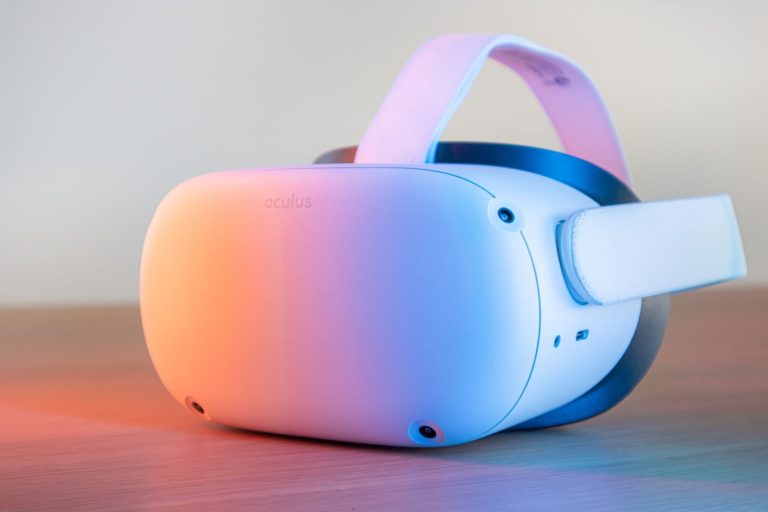
Black Friday and Cyber Monday are behind us and the numbers are in. Even though Black Friday’s reputation as the cheapest day of the year is, statistically speaking, vastly exaggerated, it is still undoubtedly one of the busiest days for retail and offers a good estimate of current trends.
This year, in terms of XR, almost every major player in the space offered some form of promotion to lure prospective customers. From Pico Interactive to Meta or HTC and companies like Pimax and Tilt 5, juicy bundles and discounts were omnipresent.
One trend, however, surprised everyone: Quest 2’s unexpected dominance over Quest 3 in terms of unit sales. And I don’t use the word ‘dominance’ figuratively. As you may have read by now, the three-year-old Quest 2 outsold Quest 3 by a factor of three to one.
By the Numbers
This was first spotted by developer Daven Bigelow. He compared Amazon’s call-to-action sale numbers (“50k other people have already bought this”) to capture the trend.
The result? Almost three times as many Quest 2s sold as Quest 3s. This observation was quickly picked up by outlets such as RoadtoVR and UploadVR, which then compiled data from many other Amazon stores worldwide, confirming the consistency of this sales pattern across all markets.
The news surprised many, especially since most pundits vividly remember how the Quest 2 (which debuted in 2020) completely decimated the original Quest 1. The Quest 2 was not only more powerful but also $100 cheaper than its predecessor, making the Quest 1 instantly obsolete.
Quest 3, on the other hand, retails for $500. That is $200 more than the Quest 2. Moreover, during Black Friday, Meta offered an additional $50 discount on Quest 2 and two free games. Consumers effectively had to choose between a Quest 3 for $500 or a Quest 2 for $250.
150k+ Quest 2's and 3's sold this month through Amazon US
40K+ of it was Quest 3 (3/4 were 128GB models) pic.twitter.com/5bjYWIGOjf
— JustDaven (@JayHadHope) November 27, 2023
Historical Evidence
With that being said, previous-gen products outselling the next-gen is not exactly a common phenomenon, especially in the gaming space. When PlayStation 5 launched in November 2020, it completely took over the market. PS5 sold twice as many units as its direct Xbox competitor (4.8 million versus 2.4 million). PlayStation 4 didn’t even register on most charts, but for those interested, Sony did sell around 756,000 units of its last-gen console, which means PS5 outsold PS4 by a factor of 6.5 to 1. This includes a big price difference, which at the time was similar to what we’re seeing today with Quest 2 and 3. In 2020, PlayStation 4 retailed for less than $200, while PlayStation 5 sold for $500. Despite that, PS5 still sold six and a half times better.
The idea that PlayStation 5 could ever be outsold by PlayStation 4 sounds pretty much implausible. Because VR headsets have a much shorter cycle than consoles, it is hard to make any direct comparisons but it’s not surprising that many XR experts are looking at this weakness of Quest 3 with concern.
The Good News
However, there is a silver lining. What matters equally, if not more, is the total number of headsets sold, and here the situation looks much better. Just judging from Amazon US numbers alone, at the time of writing, there were more than 180,000 Quests (2 and 3 combined) sold during cyber week holiday shopping. This compares to an estimated 453,000 units sold in the entirety of Q3. And we can only speculate how many more were purchased through Best Buy, Walmart, Target, Gamestop, and so on, as well as directly through Meta.
And that is only for the US market. If we ignore the peculiarity of Quest 3 being overshadowed by Quest 2 and focus on the numbers in total, this holiday season could turn out very strong for Meta in terms of sales, adjusting revenue for discounted Quest 2 sales of course.
Lastly, Quest 2 sales cast doubt on the Mixed Reality features of Quest 3, and whether or not MR is going to be as important as Meta wants it to be. That’s the point Ben Lang from RoadtoVR seems to be making — that the developers will effectively have no choice but to continue to cater to the much broader Quest 2 audience, especially now in light of sales figures that suggest that the new users entering the XR space this Christmas will predominantly stay on last-gen hardware.
The unexpected dominance of Quest 2 over its newer counterpart is a testament to the unique and exciting landscape of XR (in addition to standard dynamics of price elasticity in a price-sensitive product category). Unlike the more predictable upgrade cycles often seen in the mobile and console sectors, this latest turn of events highlights the distinct nature of the XR world, where consumer preferences and technology adoption follow their own, less conventional paths. XR continues to surprise and that, in itself, is an exciting prospect.
 Mat Pawluczuk is an XR/VR writer and content creator.
Mat Pawluczuk is an XR/VR writer and content creator.






